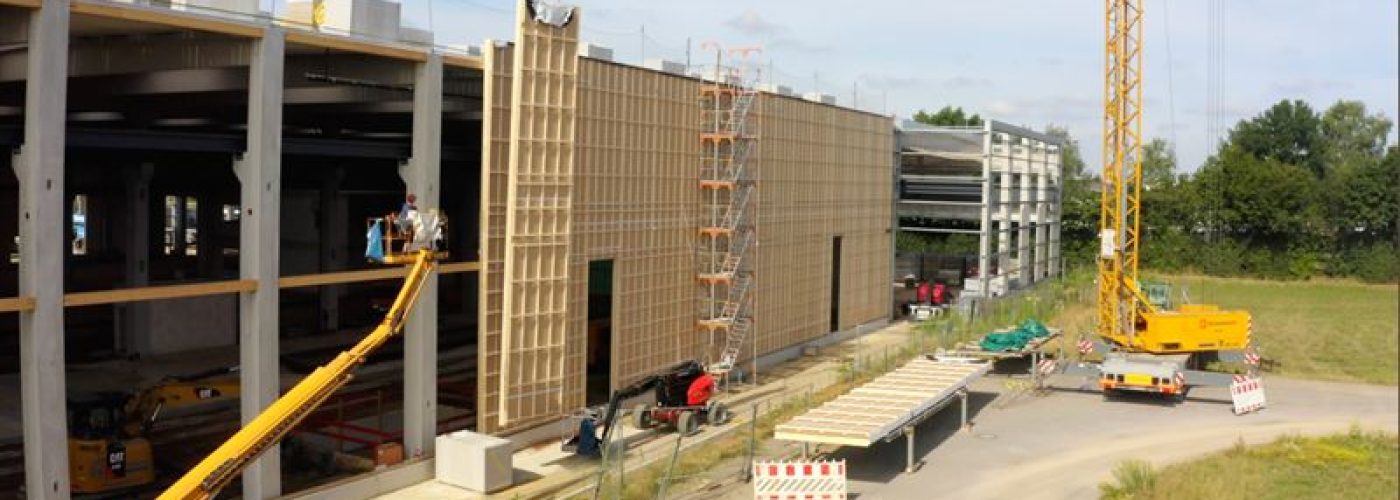A German element manufacturer Brüninghoff favoured prefabricated wooden wall elements made of Kerto® LVL for its new concrete element plant. Due to the high level of prefabrication, assembly times were optimised. At the same time the material is impressively sustainable and material-efficient, fitting in with the overall concept of the new plant.
The modern concrete element plant in Heiden Germany has an area of around 17,000 square metres. Metsä Wood’s Kerto LVL L-panels and Kerto LVL T-studs have been used for the prefabricated non-load-bearing wall elements. The high-quality wall elements completely cover the height of the hall giving it an attractive appearance while meeting strict standards of sustainability.
“The Brüninghoff Group makes prefabricated wooden elements with a particular focus on products with a very high proportion of wood products – such as laminated veneer lumber. To this end, we carefully select partners that fit our sustainability strategy and who are reliable. In this context, we chose wall elements made of Kerto LVL from Metsä Wood for our new concrete element plant,” explains André Leipold, Technical Director of Brüninghoff Holz GmbH & Co.KG.
A hybrid structure combines wooden elements with concrete
Sustainability was considered as early as the planning and construction phase of the new plant. That is why a hybrid construction structure with prefabricated external non-load bearing wall elements made of Kerto LVL was chosen for the building.
Metsä Wood’s laminated veneer lumber is perfect for element manufacturing. It is also extremely material-efficient; it is needed less in volume compared to other wood materials and its strength-to-weight ratio is excellent. “According to calculations using Carbon Storage Calculator, just the Kerto LVL used in the factory building stores carbon a total of 165.8 tonnes of CO2eq. This means that in comparison to other construction materials, wood is very sustainable,” explains Leipold. The building has a total of 239 wall elements with an overall area of around 5,000 square meters. The elements were produced at the Brüninghoff element factory and are attached to a load-bearing concrete frame consisting of a hybrid structure. Sustainability in focus
The new concrete element factory does not just steer production towards sustainability, but also develops a consistently sustainable construction concept. “Through this construction, we are forcing structural change towards construction that supports circular economy. Change is needed as the construction sector is responsible for consuming huge quantities of resources. It is a question of optimising construction methods, developing low-emission concepts and increasingly backing recycling solutions,” explains Frank Steffens, Managing Director of Brüninghoff.






